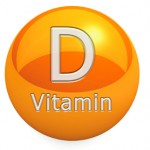NEW YORK (Reuters Health)—Vitamin D-metabolite ratio (VMR) may be a better marker of bone health than 25(OH)D (25-hydroxyvitamin D), a new study suggests.
“The parameter that’s currently used to assess vitamin D status, 25(OH)D, is a flawed measure because it doesn’t consistently associate with important bone outcomes like hip fractures,” Dr. Charles Ginsberg of Veterans Affairs San Diego Healthcare System, who helped conduct the study, told Reuters Health in a telephone interview. The findings were published online November 16 in Bone.
Dr. Ginsberg and his colleagues looked at data from the Cardiovascular Health Study on 890 community-dwelling elders, who had a mean 25(OH)D of 28 ng/mL. They also measured the VMR, or the ratio of the catabolic product 24,25(OH)2D to 25(OH)D.
A 1% increase in VMR, 25(OH)D, or 24,25(OH)2D was associated with 0.26%, 0.32%, 0.25% lower parathyroid hormone (PTH) levels, respectively (P<0.05 for all). Bone mineral density (BMD) data were available for 358 study participants. There was no association between 25(OH)D or VMR and BMD, but there was a modest association between increased 24,25(OH)2D and higher hip BMD.
During follow-up of 8.4 years, 289 hip fractures occurred. Risk of hip fracture fell significantly with increased 24,25(OH)2D and VMR (hazard ratio per standard deviation, 0.73 and 0.74, respectively). However, there was no significant association between 25(OH)D and hip fracture risk.
A person in the highest quartile of VMR would have half the risk of hip fracture compared to someone in the bottom quartile, Dr. Ginsberg noted.
While Americans spend billions of dollars on vitamin D supplements, he added, basing the need for supplementation on 25(OH)D levels may not identify people who would truly benefit. “That’s not necessarily the number we should be following; perhaps we should be following the VMR,” he said.
The next step, according to Dr. Ginsberg, will be to see if increasing an individual’s VMR reduces their fracture risk. VMR could also be used to look at levels of vitamin D in relation to the risk of multiple sclerosis and several other illnesses, he added.
Reference
- Ginsberg C, Katz R, de Boer IH, et al.The 24,25 to 25-hydroxyvitamin D ratio and fracture risk in older adults: The cardiovascular health study. Bone. 2017 Nov 16;107:124-130. [Epub ahead of print]
